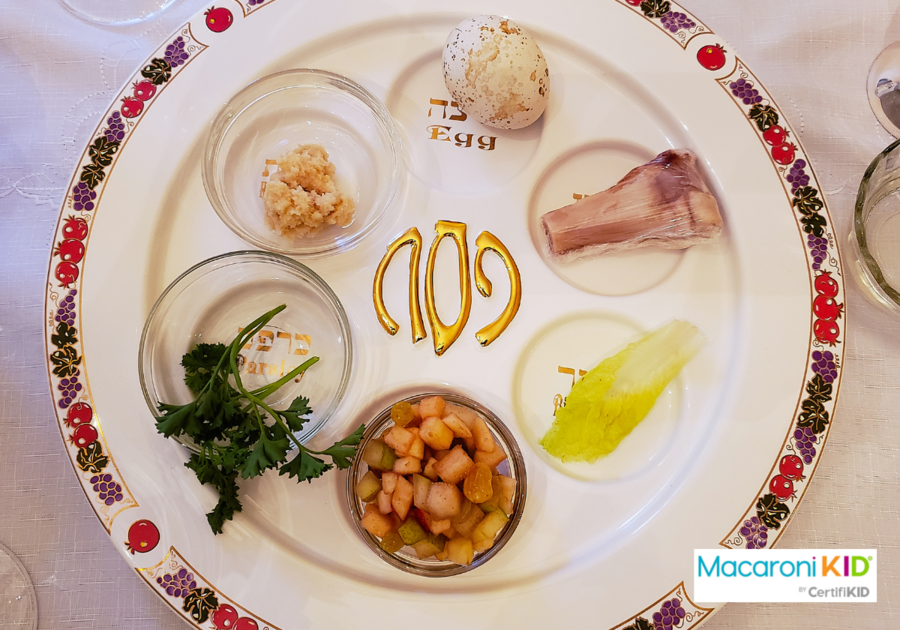Did you know that eggs are more than just a tasty food, they are also an important symbol for many cultures - especially during spring? In the Jewish tradition, a hard-boiled egg is one of six key components of the Seder Plate - the centerpiece of Passovers' ceremonial meal. The Passover Seder is a time for Jews to retell the story of their Exodus from slavery in Egypt during the time of Moses and each item on the seder plate is used for this purpose.
There are a few newer variations on some of the traditional items plus some extra optional items your family can choose to include:
- A bitter herb, many use grated horseradish on top of romaine lettuce to represent the bitterness of life as a Jewish slave in Egypt.
- Typically a green vegetable like parsley (or sometimes an onion or boiled potato) is dipped in salt water and eaten as a symbol of the tears shed by Jewish slaves.
- A mixture of chopped apples, nuts, and red wine - charoset stands for the bricks and mortar Jewish slaves used to build the pyramids of the Egyptian kings.
Zeroa
- A roasted shank bone (frequently the bone of a lamb or some use a chicken neck) represents the sacred burnt offering at the ancient Temple of Jerusalem. A vegetarian alternative is to use a roasted beet.
- A roasted or hard-boiled egg is a symbol of mourning, representing the sorrow of the Temple's destruction. The roundness of the egg also represents the cycle of life and hope for a new beginning.
- You will find several small bowls of salt water on the table for dipping during the reading of the Haggadah - the salt water symbolize the tears shed.
- On a separate plate will be three pieces of matzah stacked to represent the bread that did not have time to rise as the Jews fled Egypt. The middle piece is broken in two and the larger half the "afikomen" is hidden for the children of the house to find toward the end of the meal. The Seder cannot conclude without it, so kids are often in a position to bargain for an extra treat before they agree to give it back!
More helpful resources:
- Chabad: The Seder Plate - Ingredients and placement
- 18 Doors: What Goes On a Seder Plate and How To Make It? Plus common seder plate additions
- the vegetarian “shankbone”
- Veganise your seder plate
- PJ Library: The Before-Bedtime Seder: A Short but Meaningful Celebration For The Littlest Attendees
- PJ Library: Craft for kids - How to Make Your Own Seder Plate
Here's a fun song if you want to include the kids in preparing the Seder plate:
Shopping for Kosher foods, Jewish items and gifts:
- Conejo Kosher Market: New Kosher Grocery Store in Agoura Hills
- J-Home Malibu: Spiritual and unique Judaica home goods and more.
- Shalom House: Fine Judaica since 1971, located in Woodland Hills
More Passover articles you will enjoy:
- Passover: Why Is This Night Different From All Others?
- 9 Ways to Make Passover Fun and Meaningful for Your Family
- What Is Passover? Learn All About This Important Jewish Holiday
- Passover Recipes - Macaroni KID Favorites
- Super Easy Matzo Ball Soup You can Make for Passover or Anytime!
- Great Grandma Dora's Matzah Ball Soup - Just in Time for Passover
- Passover Muffins for the Matzah-Weary that Your Family Will Enjoy!
- Make Some Yummy Passover Candy . . . Chocolate-Covered Toffee Matzah
Please share this helpful Passover article with a friend and make sure to Subscribe so you don't miss out!
Follow us: Facebook | X - Twitter | Instagram









